Like doodling? Then why not see if you can create your pool noodle robot to draw for you? There are many fun things to do with pool noodles; now use your engineering skills to develop a cool pool bot that can do art too! You only need a few simple supplies, an electric toothbrush, and a pool noodle for this fun robot art activity.
HOW TO MAKE A POOL NOODLE ROBOT
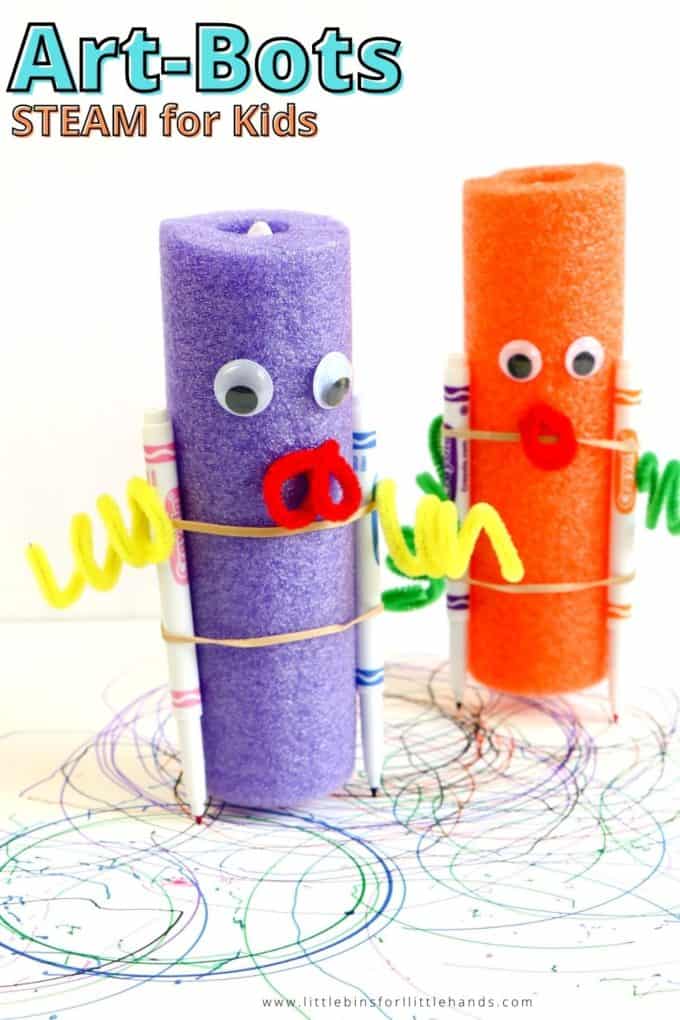
ROBOTS FOR KIDS
What is it about robots that is fascinating for kids and adults alike? Now make your own simple pool noodle bot that can draw with markers! The mechanism for this simple STEM project is an inexpensive electric toothbrush.
An electric toothbrush is a tool that uses electricity from a built-in battery to automatically move the bristles on the brush head. Normally, that’s what helps you clean your teeth. Instead, the vibrations from the toothbrush cause the pool noodle and the attached markers to move. You have your own doodling pool bot!
POOL NOODLE ROBOTS
YOU WILL NEED:
- 1 pool noodle, cut to the length of the toothbrush
- 1 electric toothbrush (We used one from the Dollar Tree.)
- Wiggly eyes, for decorating
- Glue dots
- Chenille stems, for decorating
- 2 rubber bands
- 3 markers
- Paper (We used white poster board)
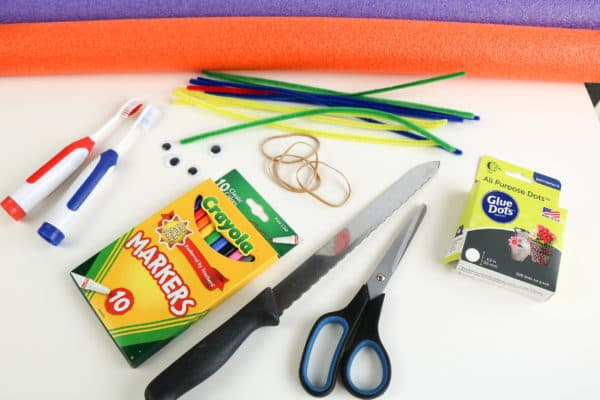
HOW TO MAKE A NOODLE BOT
STEP 1. Insert the electric toothbrush into the middle of the pool noodle.
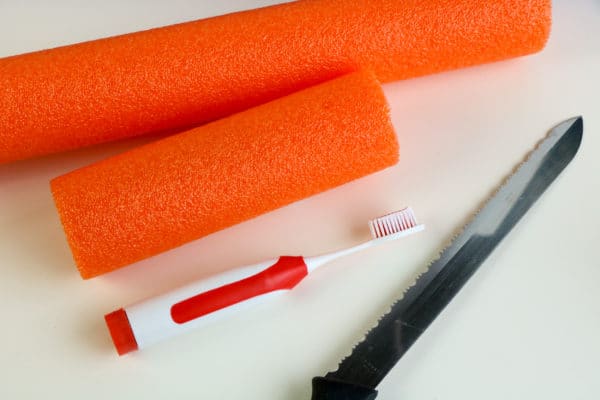
STEP 2. Using glue dots, attach the wiggly eyes.
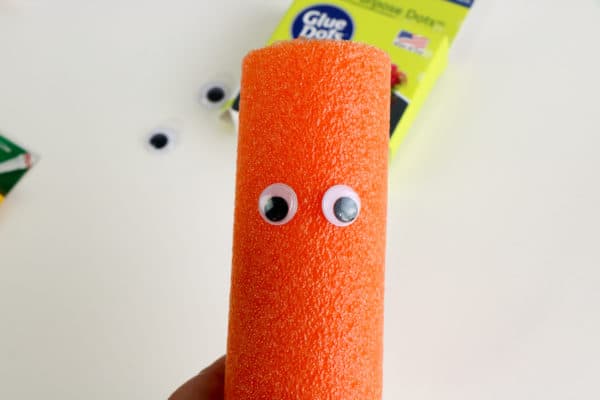
STEP 3. Attach the markers using the rubber bands. Do not glue the markers to the pool noodle as they may need to be adjusted from time to time to keep the robot moving.
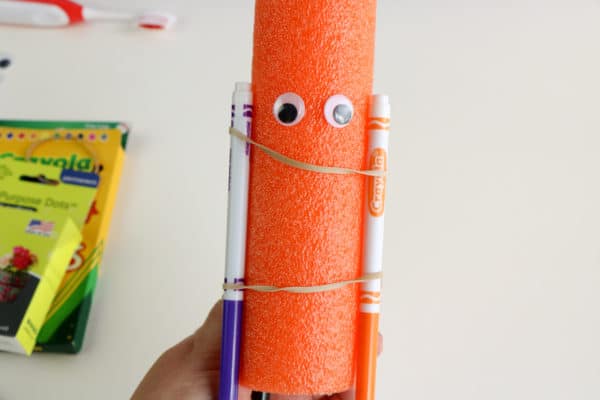
STEP 4. Twist, curl, and/or cut the chenille stems to decorate the robot.
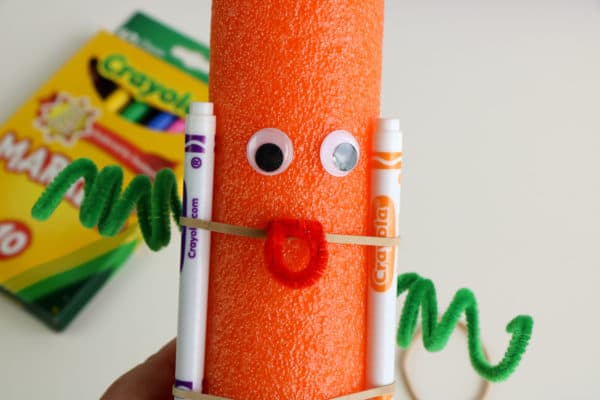
STEP 5. Uncap the markers and turn on the toothbrush. Place the robot on the paper. Adjust the markers if needed to get the robot moving. We found that keeping the length short and having one “leg” longer helped.
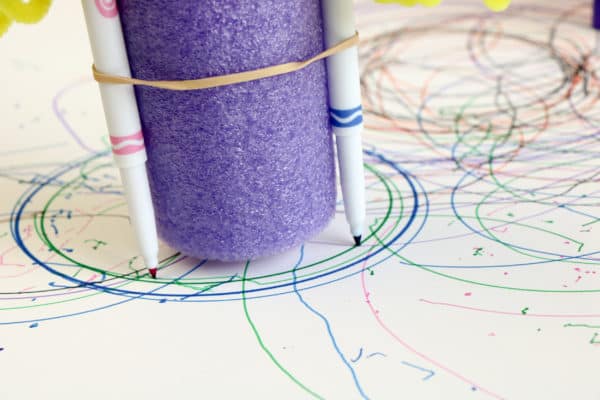

MORE FUN THINGS TO MAKE
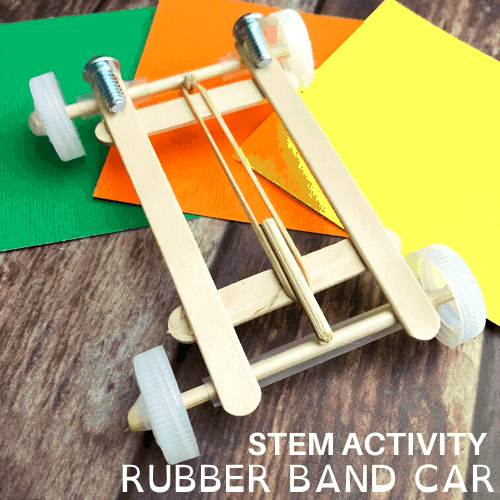
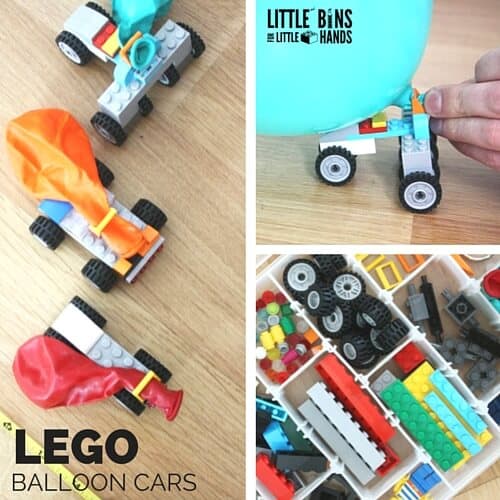

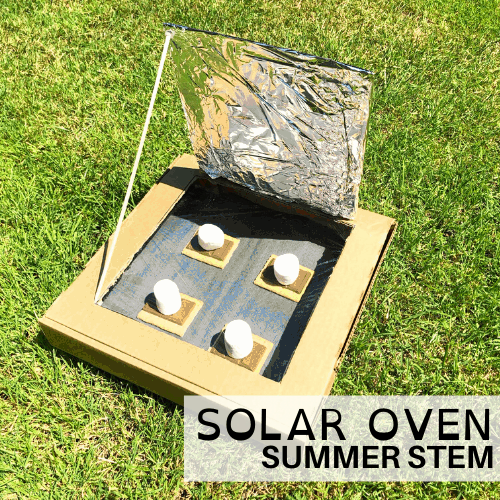

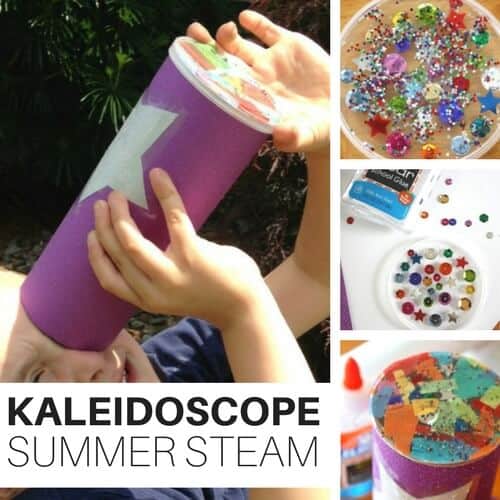
Click on the image below or on the link for more easy STEM projects for kids.


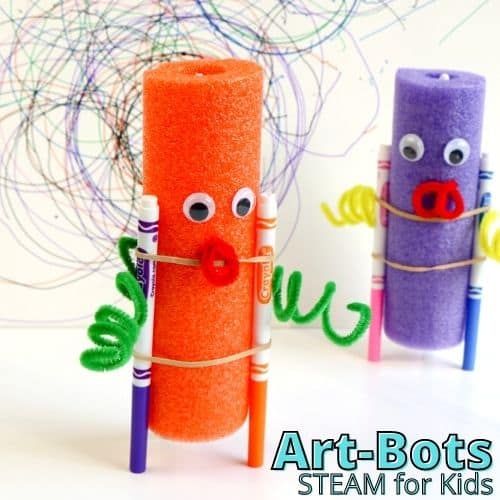
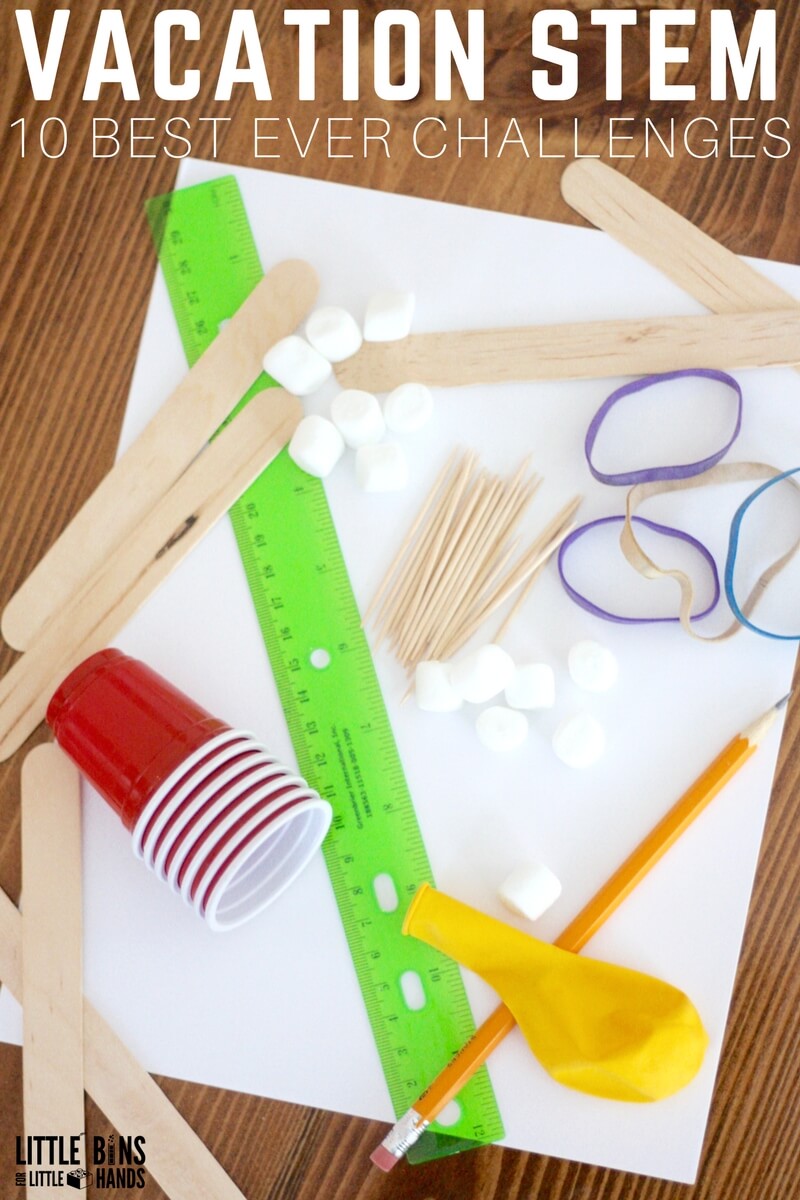





Thanks for your ideas! our noodle bot only moved work the caps of the markers were on. I guess cause there was more sliding surface. Any ideas of what to try? Thanks
Did you use the same size markers? Were they new or used? I’m not quite sure otherwise but it would be an interesting experiment!